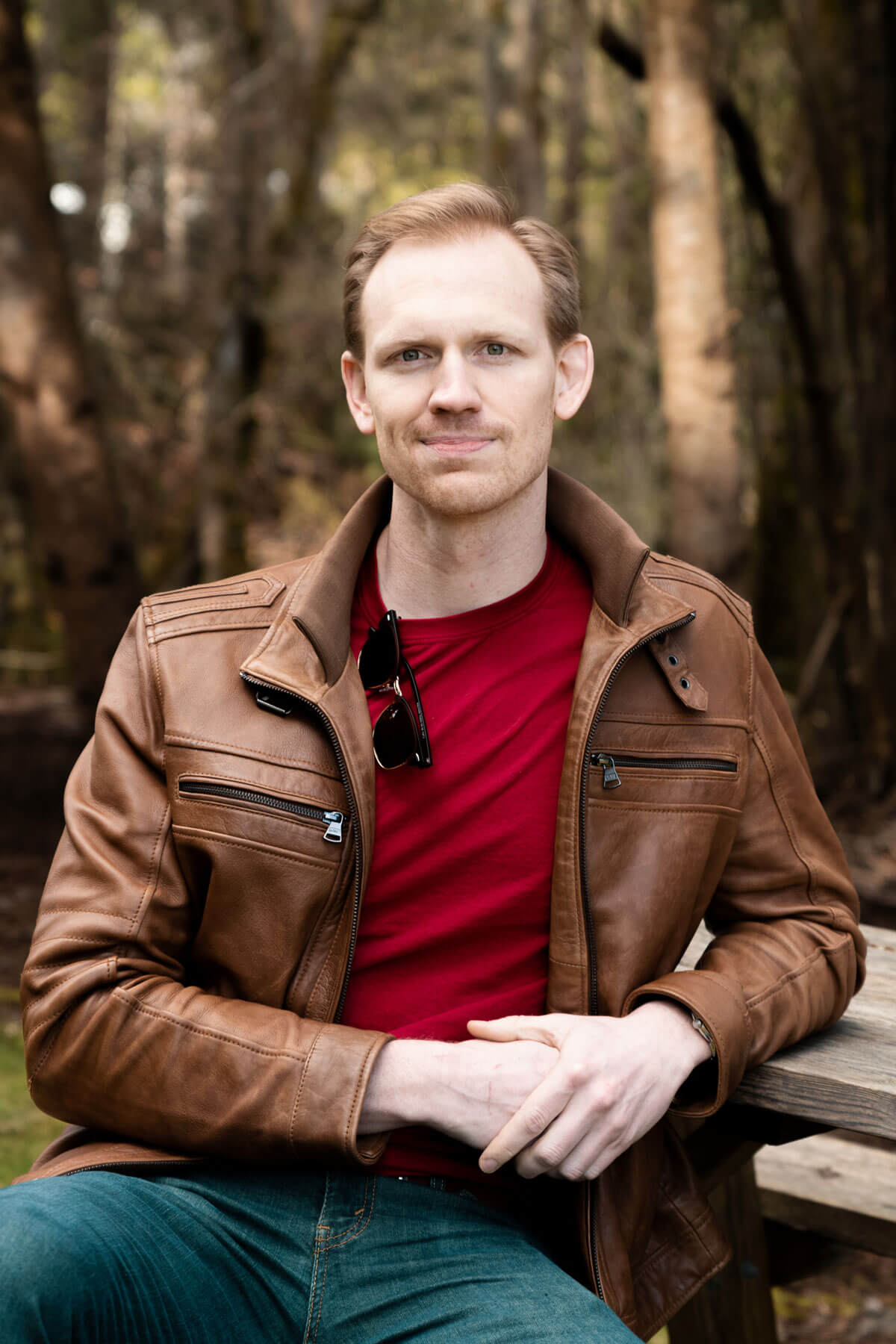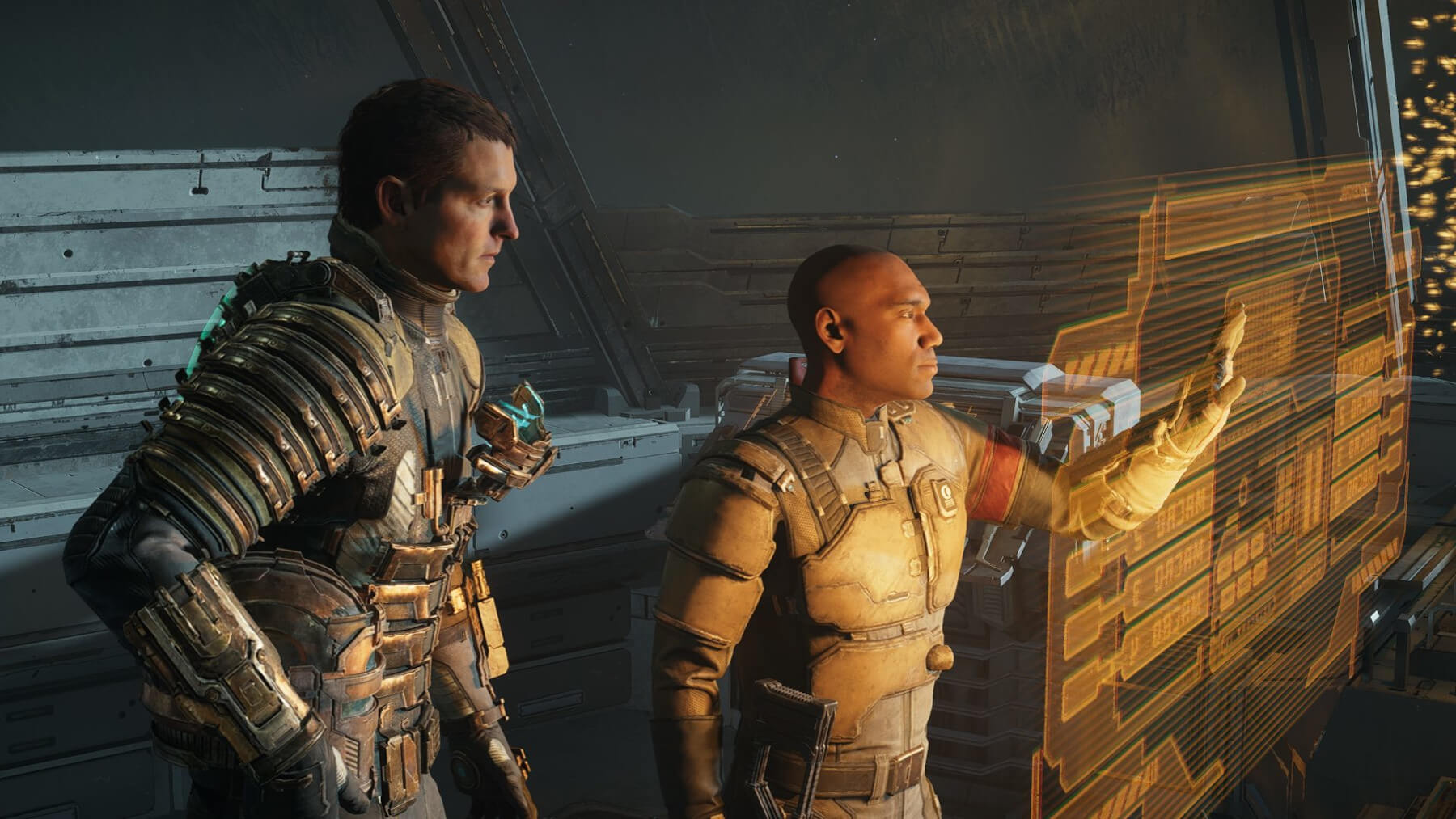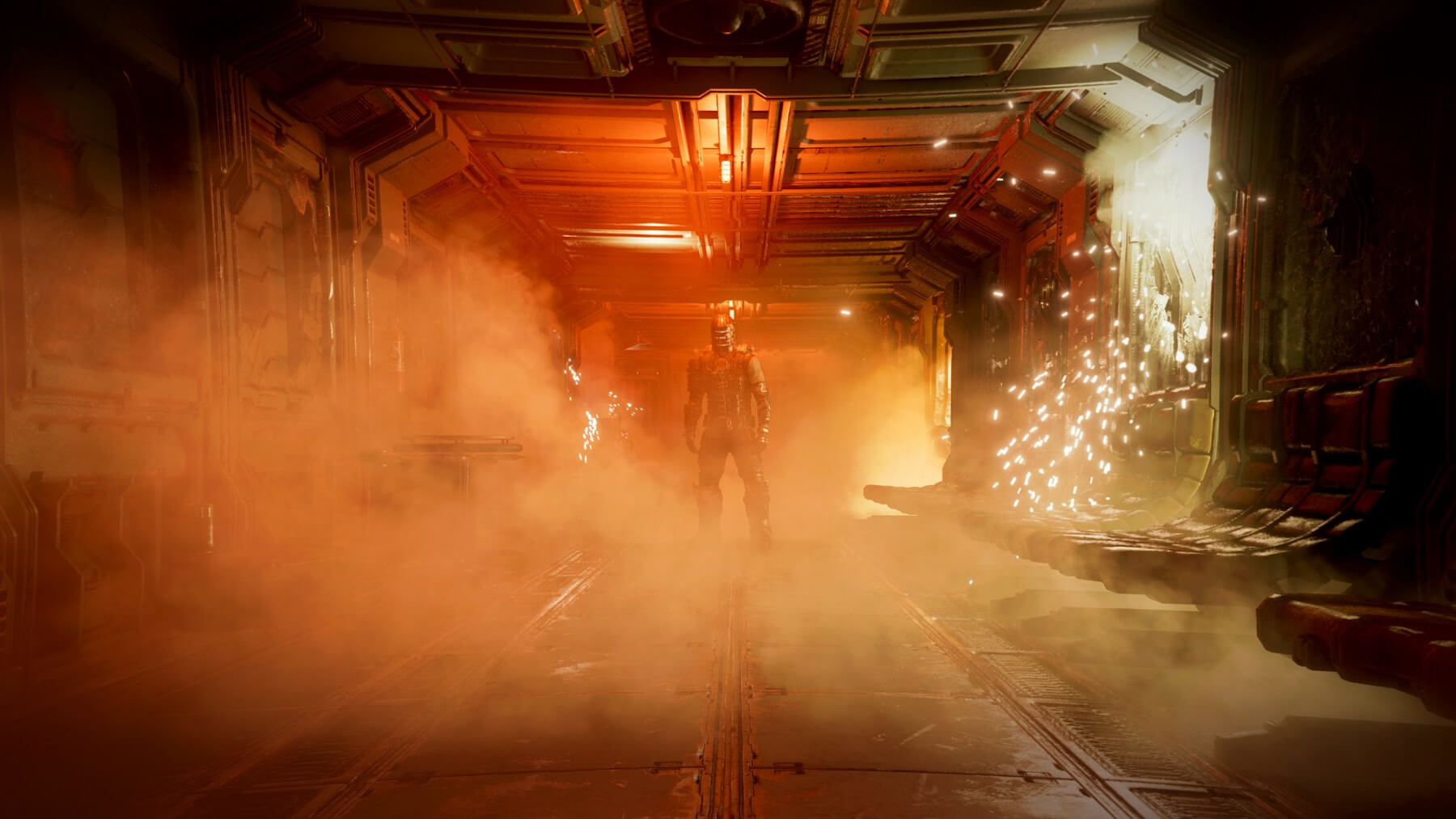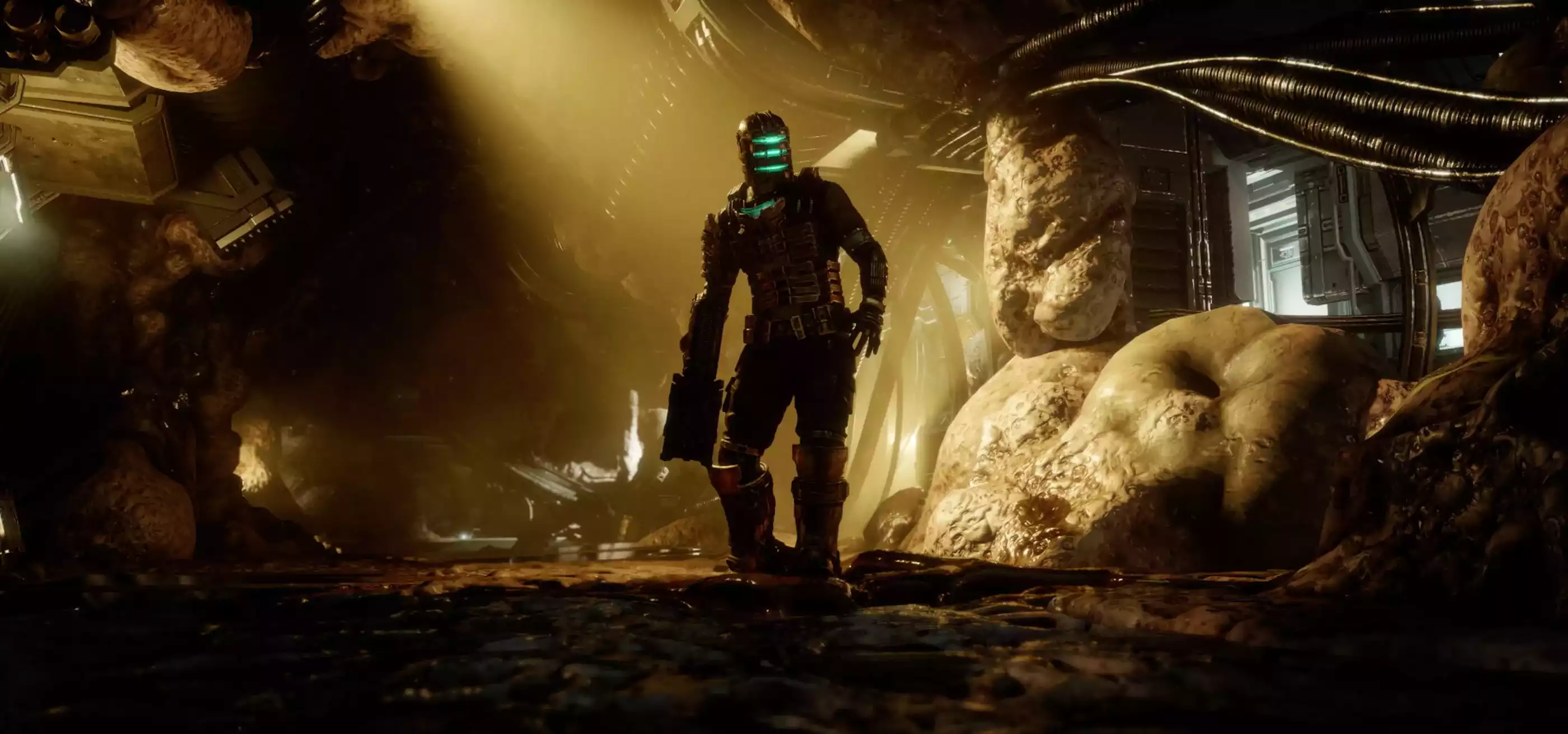You could be forgiven for not wanting to look at the screen when playing the new Dead Space by Electronic Arts, released this past January to widespread critical acclaim. It is, after all, a modern remake of one of the most gruesome and spine-chilling video games ever made. But for those who can stomach the plentiful jump scares and sci-fi monstrosities that await, you’re in for a graphical treat.

“If you go look at the old Dead Space and then the current Dead Space — just the environment that the new game brings, of being able to shoot a beam of light and see it trickling through the participating media of the scene as it obfuscates your view of what’s happening up ahead — it’s awesome,” DigiPen graduate Matt Hurliman (MS in Computer Science, 2015) says.
More than a mere admirer of Dead Space’s visual spectacle, Hurliman had a hand in bringing those technical achievements to the fore. As a senior software engineer for EA’s internal Runtime Technology Group, he belongs to a newly formed team that works directly with other EA studios as partner developers and subject matter experts.
Specifically, Hurliman’s role is to help other EA developers with graphical performance, particularly in the later stages of a game’s development. That’s typically when a game project will start to ramp up production with the introduction of high-quality image assets and other graphical flourishes — all of which, when not carefully managed, can put a strain on a GPU’s rendering capabilities. If you’ve ever played a game and noticed a severe drop in framerate, perhaps due to a multitude of enemy objects or explosions being rendered on the screen, that’s often a clear example of suboptimal graphical performance.
“And this is why a lot of games get pushed, because performance is not there,” Hurliman says. “If there’s not a person thinking about it, it can become a problem.”
Having joined the company in late 2021, he’s already been involved in a number of EA projects. His first and longest engagement so far was with the Dead Space remake development team at EA Motive, based in Montreal. Despite working remotely from his home in Redmond, Hurliman spent the better part of 2022 as an embedded member of the EA Motive team, working closely with the studio’s rendering engineers.
“I essentially just integrated into their regular workflow,” he says. “I would be pulled into any performance-specific meetings, or if we wanted to talk about a specific feature — how they’d want to tackle that.”

Typically, Hurliman says, a studio engagement will begin with introductions to the development team’s rendering lead. From there, his first order of business is to create a detailed report on the game’s overall performance profile using graphics capture data. In this case, a graphics capture refers to a code-based snapshot of how the game software is interacting — during actual runtime — with the hardware’s low-level GPU software. It’s a useful tool for diagnosing what might be causing instances of slowdown.
“I will ask them for captures that are representative of good performance in their game as well as bad performance in their game, so I can get a baseline of where they should be,” Hurliman says. “And then I will just sit down with these captures for days, a week, maybe more. I’ll just make notes about stuff I see. Maybe something is not so bad in one frame but is bad in another frame, so what is making it bad? Or what content is there that’s bad? And I just try to find suggestions on how they can improve.”
In the case of Dead Space, Hurliman also worked directly on the implementation of specific graphics features and fixes within the game’s source code. For other projects, he says, he might not do very much hands-on programming work at all. It all depends on the needs of the studio at the time.
I became very desensitized to the horror over time, seeing all this weird placeholder art, running around just in god mode, trying to get to the next thing.
Either way, it’s a job that requires a deep understanding of graphics programming in general, as well as the intricacies of EA’s Frostbite engine, used in the making of all major EA titles, from Battlefield to Madden NFL. That’s where Hurliman’s past experience comes in handy — not just his time at DigiPen, where he worked on graphics implementation for his master’s-level game projects, but also his previous job at Microsoft’s Xbox Advanced Technology Group, which saw him similarly engaging with developers on graphics and performance-related issues.
“I’m pretty good at navigating through engines, through a bunch of code that I don’t know. It’s like a treasure hunt where you’re asking yourself, ‘Where are the pieces of code that I need to make this thing work?’” Hurliman says. “You don’t try to learn the engine all at once.”

Of course, the Frostbite engine wasn’t the only the only thing Hurliman navigated while working with EA Motive. He also spent a fair amount of time running through the nightmarish corridors of the derelict USG Ishimura as Dead Space’s engineer protagonist, Isaac Clarke. That said, it wasn’t quite the same thing as playing the final release.
“I became very desensitized to the horror over time, seeing all this weird placeholder art, running around just in god mode, trying to get to the next thing,” he says. “It’s really strange to play a horror game with placeholder stuff, because it completely breaks the illusion as you’re playing through it.”
As someone with an admittedly low tolerance for scary games, Hurliman might not be in a hurry to return to world of Dead Space or its hellish, mutated inhabitants. Still, even he was impressed by what his fellow coworkers managed to pull off.
“Once we were getting towards the end, I started having to play the game for a specific task. So I played up to chapter three like, I don’t know, 15 times. I think that’s when I really started to say to myself, ‘This is a good-looking game!’” he says. “Even though I don’t really like horror games, I respect them and the information that they give you graphically. So I was pretty excited hearing that Dead Space was the first thing that I was going to do. The team was really cool. I really enjoyed working with them.”
***
DigiPen graduates Adam Parker (MS in Computer Science, 2013) and Khalil Henoud (BS in Computer Science in Real-Time Interactive Simulation, 2006) also contributed to the making of Dead Space.
